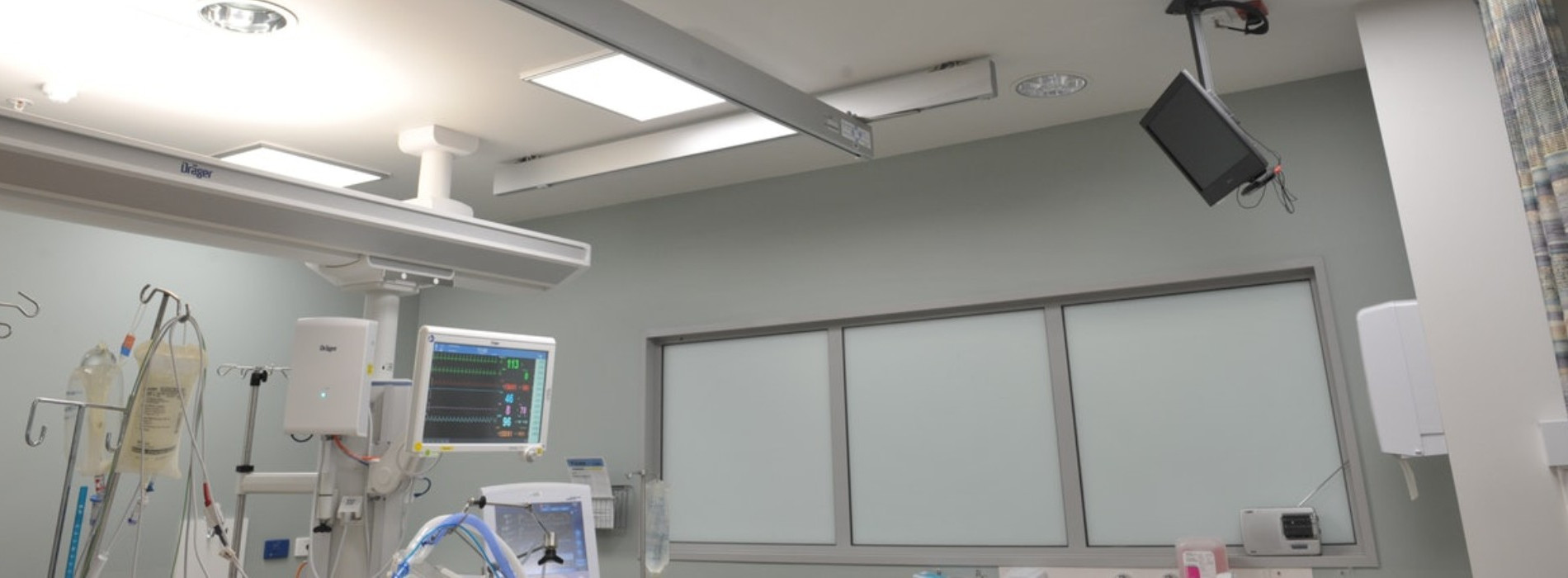WHAT IS CYANOSIS?
Cyanosis is a medical term referring to skin and/or membranes turning bluish/purplish. It is an indication that the tissue near the skin/membranes is low on oxygen saturation. It is therefore a visual manifestation of a whole range of potential cardiac or respiratory problems and is a symptom that medical professionals are trained to look for.
HOW DOES LIGHTING HELP?
Because cyanosis is a visual cue of a medical symptom based on observable colour, lighting conditions and light quality play a significant part in its visual detection.The detection of a ‘bluing’ of the skin depends largely on the accurate rendition of both ‘normal’ skin tones and blue hues, so it is particularly important that the light colour spectrum (and therefore, Colour Rendering Index) factors are considered when developing a lighting design.
LIGHTING DESIGN CONSIDERATIONS
Interior Lighting Standard AS/NZS 1680.2.5:1997 covers 'Hospital and medical tasks', and it introduces the concept of lighting to support the observation of cyanosis. It also establishes the Cyanosis Observation Index (COI) as a measure of the ability of a light source to aid the detection of cyanosis in a patient.
Full requirements are outlined in Section 7.2 of that standard, which includes:
- "Where it is decided" that cyanosis observation is necessary, the lighting should have a colour temperature of between 3300K and 5300K and a COI of 3.3 or less.
- "All members of the health care team" should "discuss and decide" on which areas need to have lighting which meets these specifications.
CYANOSIS OBSERVATION INDEX
Appendix G of AS/NZS 1680.2.5 sets out the calculation procedure for determining the Cyanosis Observation Index (COI) of a light source.
The index value describes a light source's suitability for visual detection of cyanosis in a patient. The lower the value, the better suited it is. Refer to the Standard for the full description for testing COI, but the basic overview is:
- A full spectral power test needs to be completed, covering the 380 nm to 760 nm range in 5 nm intervals.
- The test evaluates the colour appearance of fully oxygenated blood and oxygen-depleted blood under both a reference light source and then the light source under test. The COI is calculated based on the average difference/deviation of appearance when the two light sources illuminate the two blood types.
As mentioned previously, the standard suggests that light sources with a COI of no greater than 3.3 can support reliable visual observation of cyanosis.
THE PRODUCT - ECOPOINT T8 CYANOSIS TUBE
Ecopoint's Cyanosis Tube is specifically designed for hospital operating theatres and critical medical observation areas. Developed in a sleek 26mm diameter body (identical to a T8 fluorescent tube) with an efficient aluminium heat sink, choice of frosted or clear lens, superior efficacy, lockable rotating end-caps and proven Ecopoint build quality.
The Ecopoint Cyanosis Tube is powered via an external Meanwell 1-10V dimming driver configured as three tubes per driver. Available with integrated drivers in non-dimming versions. Other options include T5 and LED Panels.
Contact us for more information and pricing on the Ecopoint LED cyanosis tube.

